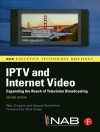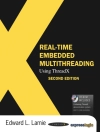UHF Radio Frequency Identification (RFID) is an electronic tagging technology that allows an object, place or person to be automatically identified at a distance without a direct line-of-sight using a radio wave exchange. Applications include inventory tracking, prescription medication tracking and authentication, secure automobile keys, and access control for secure facilities.
This book begins with an overview of UHF RFID challenges describing the applications, markets, trades and basic technologies. It follows this by highlighting the main features distinguishing UHF (860MHz-960MHz) and HF (125 k Hz and 13.56 MHz) identifications, in terms of reading range, environmental sensitivity, throughput and safety. The architecture of the integrated circuits and the organization of the memory are then described. One chapter is devoted to the air interface protocol aspects, including coding, modulation, multi readers operation and anti-collision algorithms to manage the tag responses. Focus will be put upon the EPC Gen2 protocol adopted in the ISO 18000 Part 6.
The core of the book will cover the design and manufacturing issues of RFID tags. The influence of the propagation medium (warehouse, libraries, etc.), the tag close environment (bottles, linens, containers, carton boxes, etc.) and the coupling between tags will also be carefully addressed.
The final chapter is dedicated to an industrial use case in the supply chain management, either in the retail inventory or blood traceability.
Tabella dei contenuti
Introduction ix
Chapter 1 Design and Performance of UHF TAG Integrated
Circuits 1
1.1 Introduction 1
1.2 Integrated circuit atchitecture 2
1.3 RF to DC conversion: modeling the system 3
1.4 RF to DC conversion: proposed circuits and performances
21
1.5 Voltage limiter and regulator 26
1.6 Demodulator 27
1.7 Oscillator 29
1.8 Modulator 30
1.9 Digital blocks 31
1.10 Technology, performances and trends 32
1.11 Bibliography 36
Chapter 2 Design of UHF RFID Tags 41
2.1 Tag antenna design 41
2.2 Matching between the antenna impedance and the microchip
impedance 65
2.3 RFID tag antennas using an inductively coupled feed 79
2.4 Combined RFID tag antenna for recipients containing liquids
83
2.5 Tag on metal 89
2.6 Bibliography 106
Chapter 3 The Backscattering Technique and Its Application
111
3.1 Backscattering principle of communication by between-base
station and tag 112
3.2 The merit factor of a tag, Deltasigma e s or Delta RCS
116
3.3 Variations of Deltasigma e s = f(a) 128
3.4 After the theory, RFID at UHF and SHF realities 128
3.5 Measuring Delta RCS 138
3.6 The ‘Radar’ equation 144
3.7 Appendix: summary of the principal formulas 145
Chapter 4 RFID Markets 149
4.1 Introduction 149
4.2 Market inflection point: users 149
4.3 RFID: what for? 150
4.4 Open- and closed-loop applications 152
4.5 RFID return on investment 153
4.6 Many RFID technologies 156
4.7 Examples 157
4.8 Next RFID: product-embedded and seamless infrastructure
160
Index 169
Circa l’autore
Jean-Marc Laheurte is Professor and Head of the ESYCOM Laboratory at the Université Paris-Est Marne-La-Vallée, France.












